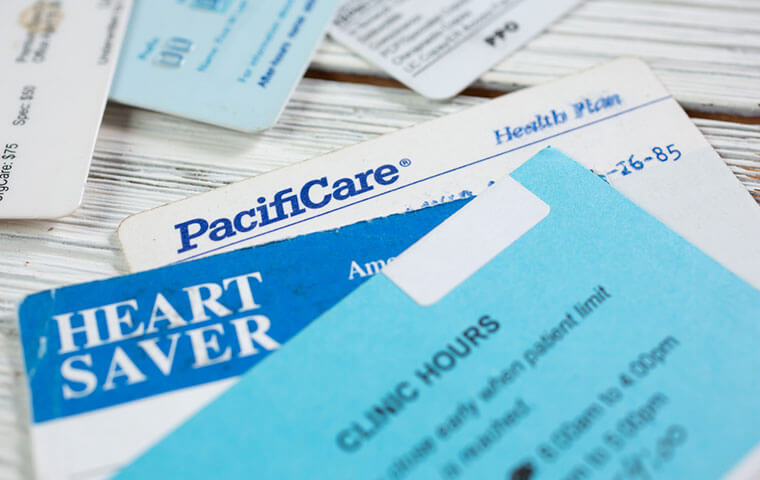 OPM has published guidance on how the lapse in appropriations impacts insurance and Open Season (you can still change your coverage.) Image: The Image Party/Shutterstock.com
By: Reg Jones
OPM has published guidance on how the lapse in appropriations impacts insurance and Open Season (you can still change your coverage.) Image: The Image Party/Shutterstock.com
By: Reg JonesThe Federal Employees Health Benefits (FEHB) program remains the world’s largest employer-sponsored health insurance program—even after the creation of the separate Postal Service Health Benefits (PSHB) program last year. Together, these programs continue to provide millions of federal and postal employees, retirees, and their families with access to comprehensive, affordable health coverage.
For 2026, the FEHB Program will feature 47 carriers with 132 plan options, while the new PSHB Program—covering postal employees and retirees exclusively—will offer 17 carriers and 75 options. The Federal Employees Dental and Vision Insurance Program (FEDVIP) will include 31 total plans, with 21 dental and 10 vision options.
As the 2026 Federal Benefits Open Season approaches—November 10 through December 8, 2025—it’s important to understand how these programs work, how they differ, and how to make the most of your choices.
Enrollment
As a federal employee, you may enroll in FEHB coverage—and include any eligible family members—within 60 days of your initial appointment. If you do not enroll at that time, you can still sign up or make changes during the annual Open Season period each fall (the Monday of the second full workweek in November through the Monday of the second full workweek in December).
Enrollment is guaranteed—no medical exams or waiting periods are required. You can choose among three coverage types:
- Self Only – covers you alone
- Self Plus One – covers you and one eligible family member
- Self and Family – covers you, your spouse, and eligible children under age 26
You can also adjust your enrollment outside of Open Season if you experience a qualifying life event—such as marriage, divorce, the birth or adoption of a child, or loss of other coverage.
What about the government shutdown? An employee who is furloughed and experiences a qualifying life event can enroll or make changes in enrollment in the FEHB Program. OPM has published guidance on how the lapse in appropriations impacts insurance and Open Season (you can still change your coverage.)
Premiums
The government continues to pay up to 75% of the total premium cost for both FEHB and PSHB enrollees, while employees and retirees pay the remaining share. Because premiums and coverage levels vary by plan, it’s important to compare options each Open Season to ensure you’re getting the best value for your needs.
For postal employees and retirees, PSHB premiums are now calculated separately based on a postal-only risk pool, which may result in slightly different rates compared with similar FEHB plans.
The average increase in enrollee premium shares are increasing by 12.3% and 11.3% for FEHB and PSHB. Last years enrollee hike was 13.5% – meaning FEHB enrollees are seeing a roughly 25% hike in their out of pocket premiums in a two year span.
Benefits
Each year, OPM negotiates with participating carriers to determine plan offerings and premiums for the coming year. These contracts establish the benefits available to enrollees, as detailed in each plan’s official brochure. These brochures describe covered services, exclusions, and limitations—so reviewing them carefully is key before making your selection.
If you ever have a question or dispute about your plan coverage, OPM retains exclusive authority to resolve those matters.
FEHB, PSHB, and Medicare
For most federal retirees enrolled in FEHB, Medicare enrollment is optional, although those who enroll in Medicare Part B often see lower out-of-pocket costs. In contrast, under the new PSHB program, postal retirees and covered family members aged 65 or older are required to enroll in Medicare Part B to maintain their PSHB coverage (with limited exceptions). This change helps coordinate benefits between Medicare and PSHB, improving long-term sustainability and cost efficiency.
Looking Ahead
The 2026 Open Season marks the first full year in which FEHB and PSHB operate side-by-side—each designed to meet the needs of their respective populations. Whether you are a federal employee, a postal worker, or a retiree, now is the time to review your options, compare costs and benefits, and make informed choices that best fit your family’s health and financial situation.
Coverage changes made during Open Season will take effect in January 2026.
5 Steps to Protect Your Federal Job During the Shutdown
Over 30K TSP Accounts Have Crossed the Million Mark in 2025
The Best Ages for Federal Employees to Retire
Best States to Retire for Federal Retirees: 2025
Primer: Early out, buyout, reduction in force (RIF)
See also,
OPM Guidance Addresses Pay Issues arising During, After Shutdown
FERS Retirement Guide 2025 – Your Roadmap to Maximizing Federal Retirement Benefits

